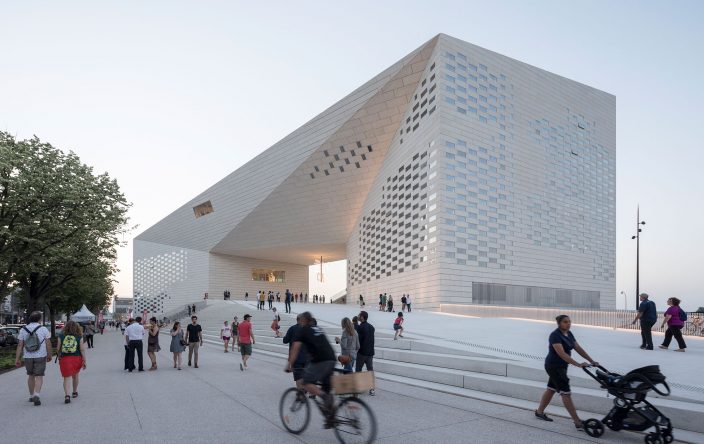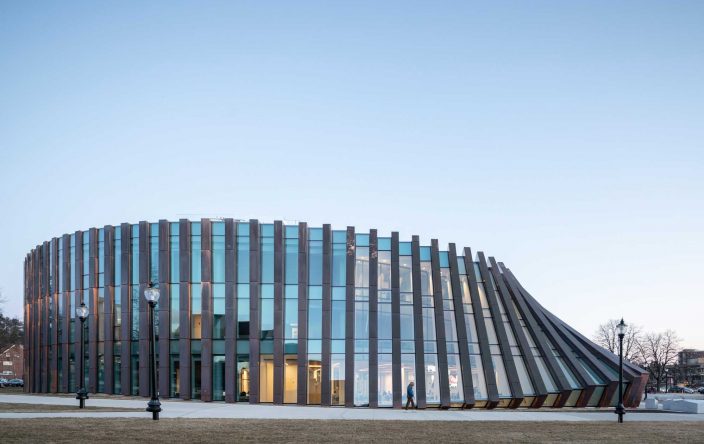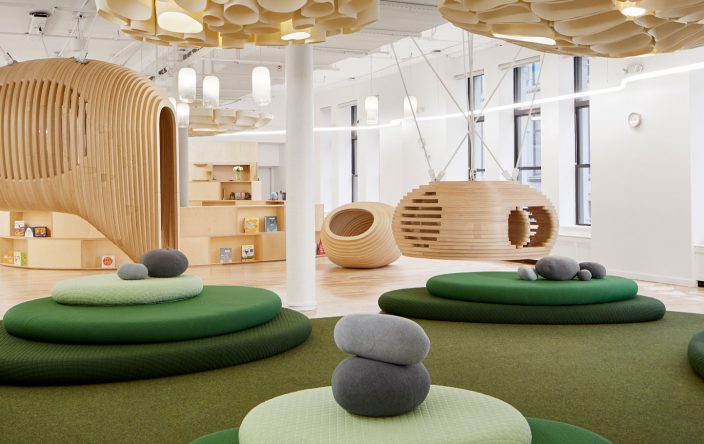
5 of the Most Innovative Architecture Firms
What are the most innovative architecture firms today? The AEC industry is notoriously slow to adopt new technologies. Cumbersome organizational structures and high financial stakes make it difficult for AEC professionals to experiment. Due to the limited role of architects in the project development process, innovative design solutions and experimentation with new manufacturing techniques are still confined to academic circles and research institutions.
However, some architecture firms are utilizing their high profiles, international success and the influx of talented, young designers to establish in-house research divisions and incubators that support the development of new ideas in the AEC industry. The following five companies are consistent in pushing the envelope and helping architecture adopt some of the latest technologies:
Our top 5 most innovative architecture firms list:
#1 BIG | Bjarke Ingels Group
One of the most renowned architecture firms in the world, BIG, is a great example of architects keeping step with pop culture and new business trends. Both their design and company culture reveals a nimbleness and experimental attitude that allow them to explore different avenues for practicing architecture. BIG’s founder, Bjarke Ingels, is a rare example of an archipreneur attuned to the latest media trends and business strategies. He embraces social media, invests in new enterprises, and implements innovation in his projects.
Recently, BIG teamed up with aerospace organization Rumlaboratorium, the Danish Technical University and artists from realities:united to launch a Kickstarter campaign to design a prototype of a unique steam-ring generator that would be part of the “cleanest power plant in the world.” The initiative shows a readiness to invent and extend their involvement in the construction process to engineering. In 2014, they launched a new division within the company and called it BIG Ideas, which was intended to act as a research and development lab where the firm could create products and new building materials. Several other independent projects are currently underway, many of which are focused on finding new engineering solutions to be incorporated into BIG’s projects.
#2 SHoP Architects
SHoP Architects and SHoP Construction (SC), collectively known as SHoP, are among New York’s 10 largest architecture firms. What makes them stand out among other mainstream architecture firms is their interest in addressing the gap between real estate development, architecture and engineering. A hybrid business model allows them to function as a combination of a real estate development firm, a think tank, and a one-stop shop for clients.
Five people with individual backgrounds in design, construction, business, marketing and development founded the firm in 1996. The team was led by Gregg Pasquarelli, who had previously worked as an investment banker on Wall Street. They first experimented with trading fees for equity on their Porter House project, and went on to develop several other projects, as well as their own, and collaborating with other architects.
SHoP is a trailblazer when it comes to redefining the way architecture is practiced. They are rethinking the role of architects in the project development process and looking for ways to get more autonomy, better pay, and innovative design projects off the ground, all while cutting construction costs through smart fabrication.
#3 Perkins + Will
Perkins + Will is one of the United States’ leading architecture firms in healthcare design, delivering buildings that focus on better patient experience and high performance. Their new in-house Innovation Incubator program aims to “foster, through micro-grants of money and time, a culture of innovation, creativity and experimentation by supporting small research projects proposed by individuals.” So far the program has awarded more than 150 groups of participants with the most innovative proposals.
The firm also formed 10 laboratories this year, which are focused on sustainability issues, resilience, the human experience, the design process, and mobility. Their annual design competition encourages talented designers to experiment. Design solutions selected through the contest are often further developed through the Innovation Incubator system.
#4 NBBJ
One of the first architecture offices to fully embrace Virtual Reality (VR), Seattle-based NBBJ, developed its self-contained venture Visual Vocal to build a VR platform integrated into the firm’s design process. By using VR, NBBJ hopes to speed up collaboration and communication between designers and allow them to make decisions based on client feedback. The new productivity tool will allow architects to build VR versions of 3D models that can be explored on a smartphone.
Together with mobile and cloud-based solutions, VR is expected to replace conventional communication such as email. The team, led by John San Giovanni and Sean House, raised $500,000 for Visual Vocal, which will be developed as a tool not only for architecture but also for other industries. Future plans for these platforms include solutions for working in the aerospace industry, product design, and biotech.
#5 HOK
Recently, HOK partnered with the Biomimcry Guild in order to foster bio-inspired innovation in the field of architecture. The partnership began in 2004 and the two companies have collaborated on several projects since, including HOK’s proposal for the “City of the Future” competition in 2008.
“We believe biomimicry will not only help us significantly reduce the environmental impact of our projects, but also has the potential to help define a whole new sustainable standard for our profession,” said HOK Sustainable Design Director, Mary Ann Lazarus, “Because biomimicry addresses critical environmental issues at the habitat scale, it gives us lessons on how to achieve significant results even restorative outcomes at all scales.”
HOK is also a great example of an architecture firm embracing new media tools, as one of the most active users of social media in the architectural industry. The firm launched Life at HOK in 2008 as a supplementary resource to the company’s main site. It is an employee-authored blog, dedicated to showing the processes behind their projects and office culture. HOK employees from around the country post different types of content, such as links to YouTube videos, Facebook profiles and Flickr images. The site aggregates several social media platforms and encourages feedback and interaction with and between its users.
***
These five most innovative architecture firms are consistently showing a readiness to adopt new design and communication tools, design strategies, and business models. This attitude allows them to remain flexible and absorb various cultural and technological shifts instead of simply trying to keep up with the world. Which other architecture firms do you find innovative?
Join our Newsletter
Get our best content on Architecture, Creative Strategies and Business. Delivered each week for free.

JOIN THE
ARCHIPRENEUR ACADEMY
- 9 Stage Studio Growth Roadmap
- Library of In-Depth Courses
- Checklists and Workbooks
- Quick Tips and Tutorials
- A Supportive Online Community















